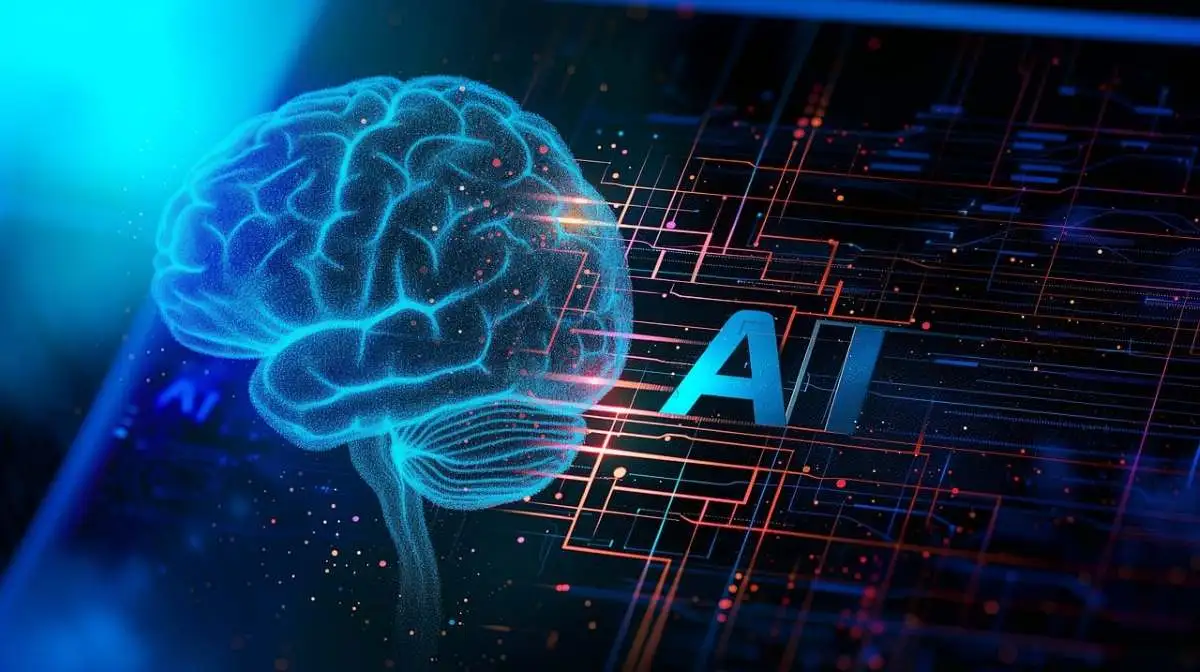Table of Content
- 1. Interactivity and Social Intelligence
- 2. Technological Implementation
- 3. Learning Paradigms
- 4. Ethical and Philosophical Implications
- 5. Problem Solving Capabilities
- 6. Nature of Intelligence
- 7. Performance Metrics and Evaluation
- Conclusion
- Frequently Asked Questions
Difference between Narrow AI and General AI
The main difference between narrow ai and general ai, Narrow AI is designed for specific tasks, Example language translation or facial recognition, excelling in those parts without exact understanding. General AI aims to replicate human like cognitive abilities and allowing it to learn, reason and adapt across many areas. While narrow AI powers most recent applications and general AI remains a theoretical goal and representing a future where machines can think & learn like humans. The Advanced difference between narrow ai and general ai here..

1. Interactivity and Social Intelligence
Narrow AIReactive Interaction
Interactions with users are naturally reactive and based on predefined scripts or patterns recognized from data. For example instance chatbots may follow programmed dialogue flows without genuine understanding .
Limited Emotional Engagement
Lacks emotional intelligence to making it difficult to understand human emotions or respond appropriately in emotionally charged situations.
General AIProactive Engagement
Planned to anticipate user needs & provide relevant information or help proactively. General ai includes understanding context, preferences and emotional states.
Emotional Intelligence
Would possibly understand & respond to human emotions, allowing for more nuanced interactions & improving the quality of engagement in social settings.
2. Technological Implementation
Narrow AIFrameworks and Tools
Develops existing frameworks such as TensorFlow or PyTorch, often tailored for specific applications and making development reachable yet limited in scope.
Application Driven Development
Mainly focused on developing applications that improve efficiency & productivity in specific domains like healthcare, finance and customer service.
General AIResearch and Development Frontiers
Now developments are more theoretical, research spanning Conceptual architecture, neural symbolic integration and advancements in neuroscience inspired models.
Interdisciplinary Approach
Combines insights from many fields, example psychology, cognitive science and ethics and aiming to make a more holistic understanding of intelligence.
3. Learning Paradigms
Narrow AISupervised Learning Dominance
Mainly relies on labeled datasets for training and making it less flexible in handling data it hasn't been openly trained on. This can lead to overfitting.
Data Dependency
Requires extensive datasets for training and is often constrained by the quality & quantity of data available.
Architecture
Naturally built on machine learning (ML) frameworks, including supervised learning and unsupervised learning and reinforcement learning. These systems rely on large datasets specific to their domain.
General AILifelong Learning
Envisioned to frequently learn from new experiences & adapt without wide retraining. This could include techniques like reinforcement learning and unsupervised learning and even self supervised knowledge.
Meta Learning
Expected to learn and how to learn, allowing it to adapt its learning strategies based on the task at hand and improving skill & effectiveness.
Architecture
The architecture for General Artificial intelligence remains mostly theoretical and is a topic of current research. It would require a flexible framework able of integrating many types of knowledge & skills, possibly involving neuromorphic computing or brain like architectures.

4. Ethical and Philosophical Implications
Narrow AITransparency and Explainability
Constant efforts focus on making narrow Artificial intelligence systems more understandable and clear, addressing concerns about trust & fairness.
Contained Ethical Risks
Ethical concerns primarily revolve around issues like bias in algorithms and privacy violations and accountability. While important these risks are often manageable within the context of specific applications.
General AIExistential Risks
Raises deep ethical problems regarding consciousness, autonomy, and moral responsibility. The possibility of a super intelligent Artificial intelligence leads to concerns about control and safety and alignment with human values.
5. Problem Solving Capabilities
Narrow AIOptimization and Heuristics
Improve algorithms focused on good optimization for specific outcomes. such as maximizing efficiency in supply chain management (SCM) or improving correctness in diagnostics.
Limited Contextual Understanding
While able of high performance in specific tasks but it fails to apply learned solutions to different or overlapping contexts.
General AIComplete Problem Solving
Would involve in complex problem solving that requires synthesizing information from multiple domains & considering long term result . This includes dealing with ambiguity and uncertainty.
Contextual Awareness
Expected to understand the context & adjust approaches based on the situation and similar to how humans think.
6. Nature of Intelligence
Narrow AITask Specific Intelligence
Narrow AI in predefined tasks and utilizing algorithms that are finely modified for specific applications. Its narrow ai intelligence is based on statistical patterns & data correlations rather than a deep understanding of concepts.
Scope
Such as voice assistants & image recognition software, recommendation systems. Each of these systems is optimized for its specific particular task but cannot perform outside of their training.
Lack of Common Sense
Narrow AI lacks common sense reasoning, which limits its skill to handle unexpected scenarios or tasks outside its training parameters.
General AICommon Sense Reasoning
General Artificial intelligence would ideally possess an understanding of everyday concepts and allowing it to make inferences & decisions in a larger context.
Scope
General AI would not only execute specific tasks but would also possess reasoning, problem solving skills & intelligence. It could learn from experiences and adjust to new situations autonomously.
Generalized Intelligence
Goals to replicate human like cognitive functions across many domains. Generalized Intelligence is theorized to integrate various forms of knowledge & skills and much like a human's ability to learn and adapt.
7. Performance Metrics and Evaluation
Narrow AITask Specific Metrics
Performance is measured through accuracy and precision, recall and other metrics tailored to exact applications. This often leads to limited success definitions that do not capture broader capabilities.
Benchmarking Standards
Uses established benchmarks & datasets for evaluation and making comparisons straight forward but context limited.
General AIComprehensive Evaluation
The evaluation would need to encompass a broader range of cognitive functions and including adaptability and creativity and emotional intelligence.
Dynamic Benchmarking
Requires the development of new standards for measuring intelligence and possibly involving complex simulations or problem-solving scenarios.
Conclusion
The difference between narrow ai and general ai is not just a matter of capability but also encompasses deeper implications for how we interact with advanced technology and the ethical considerations that arise and the future of artificial intelligence research. As Narrow AI continues to evolve & integrate into everyday applications. The aim for General AI invites complex questions about our understanding of intelligence itself & the potential impacts on society. Understanding these advanced difference between general ai and narrow ai nuances helps clarify the landscape of AI development and its implications for the future.
Frequently Asked Questions
Difference between narrow AI and general AI and super AI
Narrow AI is designed to do any simple tasks example playing chess or recommending movies but General Artificial intelligence can learn and understand any specific task that a human can do and Super AI goes beyond human intelligence and solving problems and making decisions in ways we can’t even imagine.
Examples of Narrow AI and General AI
Example of Narrow AI is a smart assistant like Siri or Alexa, which helps with tasks like setting reminders or playing music and example of General AI like a robot that can learn any skill, such as cooking or solving math problems.
Narrow AI vs generative AI
Narrow AI is make to perform specific tasks example chatbots that answer questions. Generative AI can create new things example writing poems or making pictures.
What is the difference between general AI and strong AI?
General AI and strong AI are similar in that both Artificial intelligence(AI) can think and learn like human but the main difference between general ai and strong ai, strong AI can understand and reason but general AI can perform many tasks without full understanding.
Recent Post
- Difference between narrow ai and general ai
- How AI is used in agriculture
- Janitor AI full details in depth with example
- What is the primary advantage of using generative ai in content creation
- ChatGPT features list, JBot, limitations, and benefits for you.
- The importance of computer networking & advantages of network